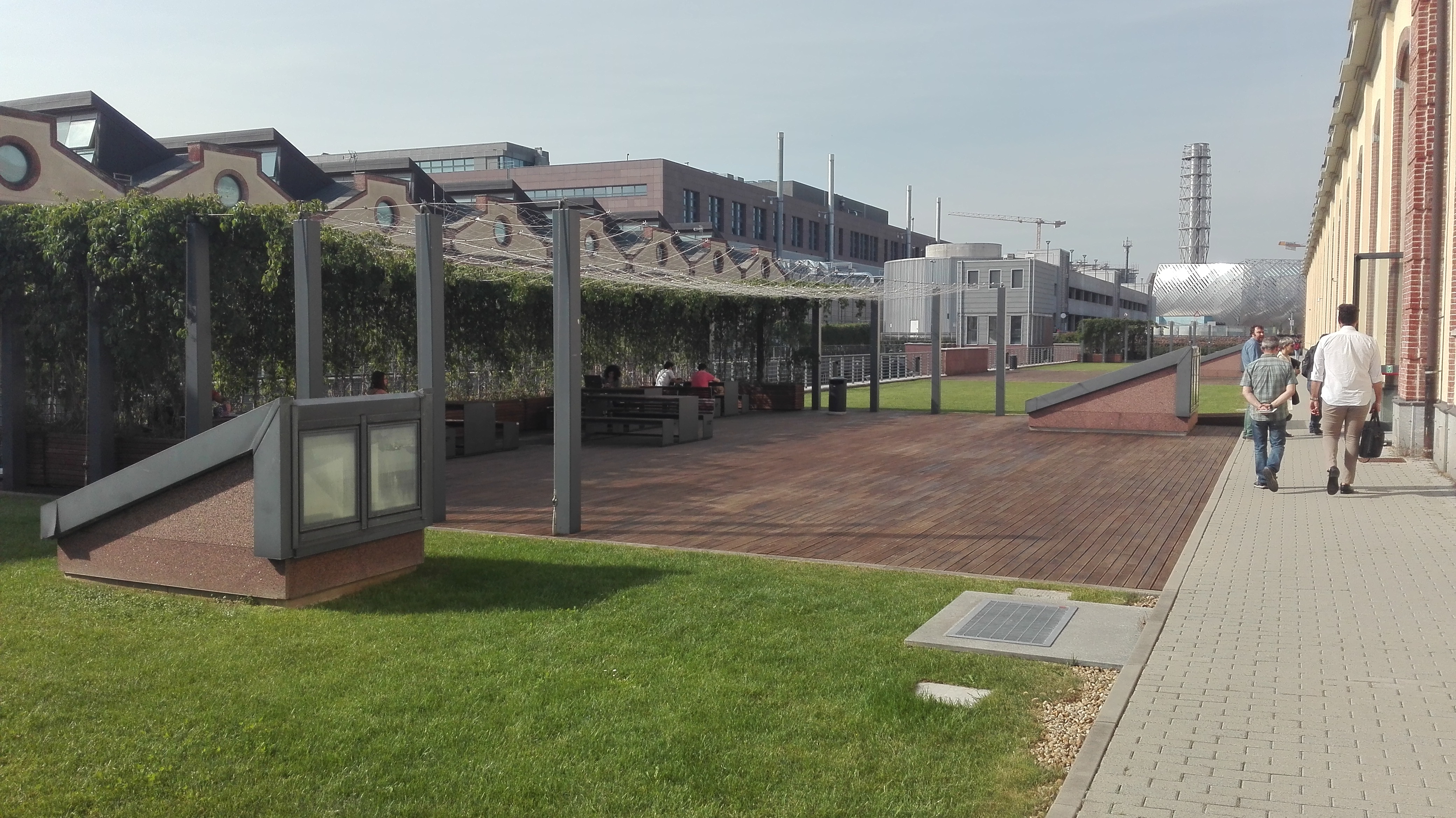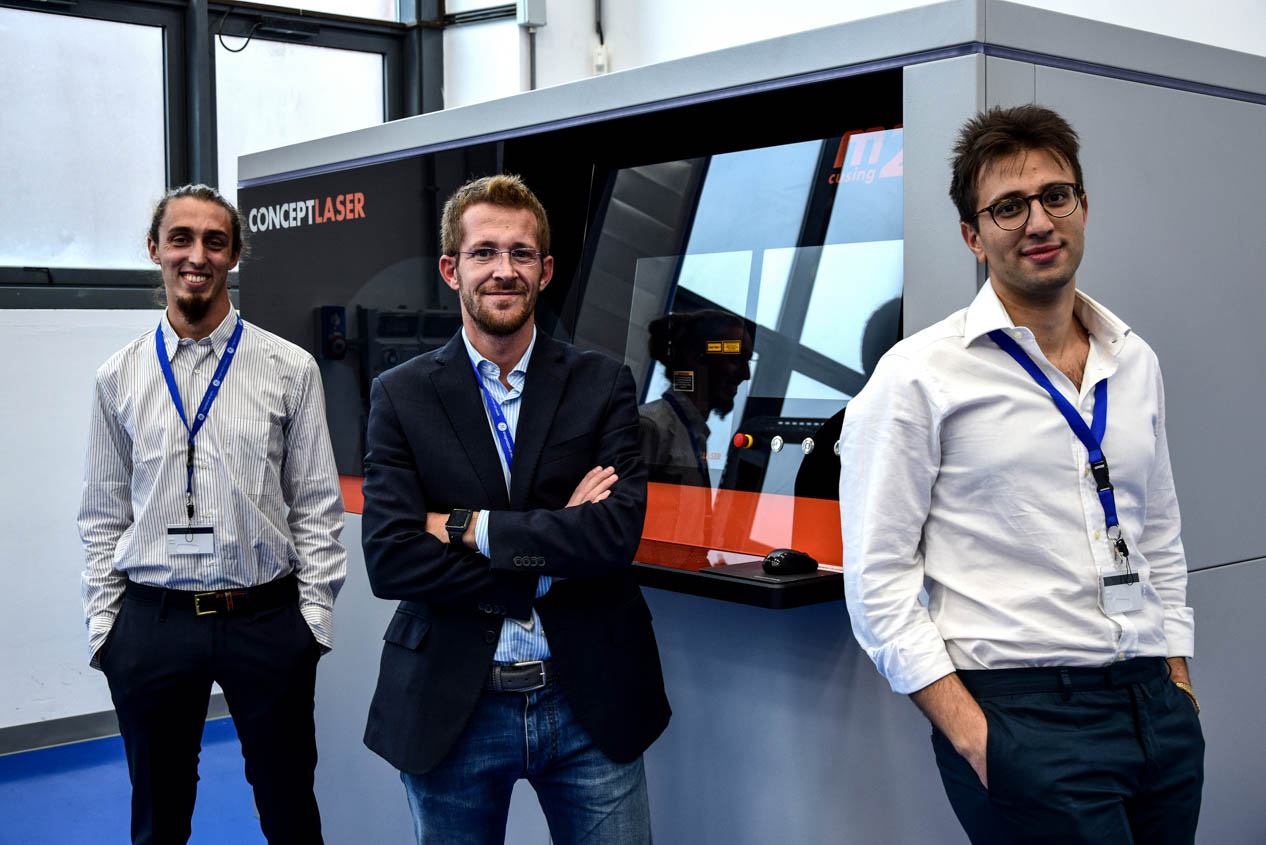Future
The Network Effect
This innovative partnership helps new ideas and talented engineers take flight.
Jun 2018
Few places illustrate the rapid evolution of 3D printing better than Avio Aero’s gleaming box of a factory in Cameri, a small town near Milan in northern Italy. The plant is filled with 20 sleek, black 3D printers, each the size of an armoire. Inside, powerful electron beams dance on thin layers of titanium and aluminum powder, fusing them into foot-long blades for the GE9X, the world’s largest jet engine. These blades, which spin 2,500 times per minute inside the hottest compartments of the engine and weigh 50 percent less than steel, helped engineers make the GE9X 10 percent more fuel efficient than its predecessor, the GE90. This is a huge deal, given that on average, fuel accounts for 19 percent of an airline’s operating costs.
The bustling Cameri plant, one of Avio Aero’s most prized assets, owes its success to a unique research and business development partnership that includes universities, small and nimble innovative companies and the government. This collective has enabled the company, which GE Aviation acquired in 2013, to quickly scale its 3D-printing. “We realized that in order to stay on the cutting edge of manufacturing research, we needed to build a broad collaborative network,” says Franco Tortarolo, who runs research programs at Avio Aero. “What you see in Cameri is a product of this project.”
The partnership, which started in 2000 with the University of Pisa, now includes some 20 universities in Europe and the U.S., government partners such as Italy’s Ministry of Scientific Research and Education, and dozens of small and medium-size enterprises (SMEs). The universities contribute a steady supply of talent and ideas, which the network companies can grab and develop into innovative products at a lower cost. Avio Aero supplies the group with market and industrial guidance to get the most promising ideas quickly off the ground.
“We’re collaborating within Avio Aero’s network since 2005, having the chance to get involved in new product or technologies introduction projects which will face technological challenges of the next decade”. Andrea Romiti is the Founder & CEO of APR, a SME that is specialized in components, accessories and equipment manufacturing for aero-engines and aero-structures. “We deal with the most interesting European tech innovation platforms: just like the manufacturing technologies for the GE9X TiAl airfoils made with Electron Beam Melting”.
Tortarolo now spends much of his time at the Polytechnic, where Avio Aero has helped open a 3D-printing lab, called Turin Additive Lab (TAL). Located inside beautifully restored locomotive repair yard, the lab holds the latest Concept Laser machines.
The lab’s purpose is two-fold: familiarize students with 3D printing and prepare talent for industrial companies keen on diving into this still-emerging field. And according to GE’s Innovation Barometer, the need for this talent is huge. Released earlier this year, the study found that 91 percent of company executives it surveyed believed that 3D printing will increase creativity within their businesses, but 53 percent said 3D printing has yet to reach its full potential because of insufficient training. In fact, many young engineers designing 3D-printed parts are learning on the job. “When I was getting my engineering degree, there was not a single additive course,” says Avio Aero’s Massimo Giambra. Giambra, 36, designed parts for GE Aviation’s Catalyst, a new turboprop engine that includes large sections made on 3D printers. He graduated from the Turin polytechnic in 2005.
"The transfer from classrooms and books to a more practical and technological environment was a huge change in my life, but now I understand where we are and, more important, where we are heading."
Nowadays, Avio Aero partnered with the Polytechnic of Turin, as well as with other Polytechnics in Southern Italy, to offer an advanced manufacturing and additive Master for near-graduates. Pietro and Cesare have just been hired last month at the TAL, becoming the first based team. But their adventure with metal 3D printing started close to their graduation. “To prep my graduation exam I started working in a casting industry: inside that traditional plant I understood how additive could overcome many difficulties, but the plant’s philosophy wasn’t imprinted that much on changing” says Pietro Signoretto. “Therefore I asked my professors for any chance to work on new technologies and they proposed me a collaboration with Avio Aero. After one year at TAL, the company proposed me to attend the master in additive manufacturing at the Polytechnic of Turin.”
Cesare attended the same Master, “it gave me a higher view on the additive manufacturing world, its purpose, so I understood the choices of the company regarding 3D printing and the lab itself” he says. “At the beginning the transfer from classrooms and books to a more practical and technological environment was a huge change in my life, because I didn’t know what did working in a company mean. But now I understand where we are and, more important, where we are heading.”
The 3D lab at the school now serves other three new students, and more are exploring additive manufacturing technology at universities and courses in Florence, Milan, Naples, Genova and Bari, where Avio Aero built a similar lab that focuses on jet engine repair. Inside the latter, young researchers and engineers have certified Cold Spray repairs on aeroengines transmission for airlines, and recently they’re rebuilding airfoils with laser deposition. In addition to 3D printing, the students and teachers at the schools and their SME partners are solving tasks involving aerodynamics, acoustics, structural integrity and other dynamics.
Tortarolo has now also started working with universities in Europe, and he is looking at empowering the network into the U.S, like with Virginia Tech. “I really like how everything is connected,” he says. “Researchers in academia want to publish results, the SMEs and companies like us want applications for new technologies, and the government wants job creation. This is a win-win for everyone.”







